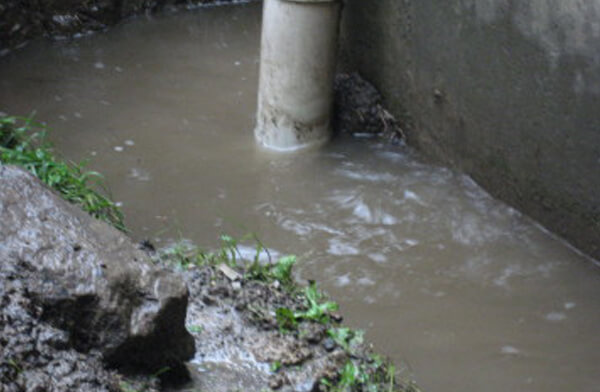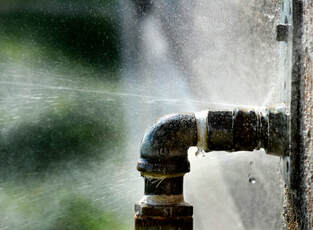Overview To Water Leakage Detection At Home
Overview To Water Leakage Detection At Home
Blog Article
They are making a few good points about Top leak detection hacks in general in the content down below.

Early discovery of dripping water lines can mitigate a possible catastrophe. Some little water leakages may not be visible.
1. Analyze the Water Meter
Every home has a water meter. Checking it is a guaranteed way that helps you discover leakages. For starters, shut off all the water sources. Guarantee nobody will certainly purge, make use of the faucet, shower, run the cleaning maker or dishwasher. From there, most likely to the meter and watch if it will transform. Considering that no one is utilizing it, there must be no activities. That suggests a fast-moving leakage if it moves. If you find no modifications, wait a hr or two and check back again. This means you might have a slow-moving leak that might also be underground.
2. Examine Water Usage
If you identify sudden changes, regardless of your consumption being the same, it indicates that you have leakages in your plumbing system. An unexpected spike in your costs suggests a fast-moving leakage.
On the other hand, a constant increase each month, even with the same behaviors, shows you have a slow-moving leakage that's additionally gradually escalating. Call a plumber to extensively examine your building, specifically if you feel a warm area on your flooring with piping beneath.
3. Do a Food Coloring Test
When it comes to water usage, 30% comes from toilets. If the shade in some way infiltrates your bowl during that time without flushing, there's a leakage between the tank as well as bowl.
4. Asses Outside Lines
Don't fail to remember to check your outside water lines also. Test faucets by affixing a yard pipe. Ought to water leak out of the connection, you have a loose rubber gasket. Change this and ensure all connections are limited. It will aid get it skillfully analyzed as well as maintained every year if you've obtained a lawn sprinkler system. One little leak can squander lots of water and increase your water expense.
5. Analyze the situation and check
House owners ought to make it a behavior to examine under the sink counters and also even inside cupboards for any type of bad odor or mold and mildew growth. These two red flags indicate a leakage so punctual focus is called for. Doing routine examinations, even bi-annually, can save you from a significant trouble.
Examine for discolorations and deteriorating as most pipelines and also appliances have a life expectations. If you presume leaking water lines in your plumbing system, don't wait for it to escalate.
Early detection of dripping water lines can reduce a prospective disaster. Some small water leaks may not be visible. Checking it is a guaranteed method that assists you find leaks. One little leak can lose loads of water and also increase your water costs.
If you presume dripping water lines in your plumbing system, do not wait for it to rise.
How to Know If Your Home Has a Hidden Leak
Water Meter Reveals Inexplicable Water Usage
If you’d like to test whether or not there’s a leak somewhere in your home, you can do this using your water meter. Here is how to conduct the test:
Don’t use any water in your home for at least 30 minutes; this also means not turning on faucets or water-using appliances.
Go outside, and check your water meter for activity.
If your water meter shows that there was activity, even though no one was using any water, this proves that there is a leak in your home.Visible Mold or Mildew Growth
Leaks behind walls create moist, dark environments that allow mold and mildew to grow and thrive. Eventually, you might see mold growth forming on the wall closest to a hidden leak.
If mold is growing in an area that receives a high amount of moisture, such as a bathroom, it may simply be an indication that better ventilation is needed. However, if you see mold growth on a wall or the ceiling in an area where you would not expect, you probably have a hidden leak.
Musty, Mildew Odor
Sometimes you might not be able to see the mold or mildew that is growing as a result of a leak. However, the smell can give the problem away just as easily. If you catch a whiff of something musty, there’s a good chance that old water is collecting somewhere in your home that you can’t see.
Stained/Warped Walls, Ceilings, or Floors
When your home soaks up water, a variety of red flags can become visible, including ceiling stains, bubbling drywall, warped walls, and sagging floors. While these issues can be caused by excess humidity, they can also be signs that a pipe or plumbing connection has started leaking behind your walls.
Inexplicably High Water Bill
After a while, you get a general sense for what your water bill should be. If you own a pool or sprinkler system, your bill will tend to be higher during summer. However, if you receive a water bill that seems especially high, and you can’t figure out what caused it, then you may have a hidden leak somewhere that’s increasing your bill.
https://www.plumbingjoint.com/blog/2019/july/how-to-know-if-your-home-has-a-hidden-leak/

Do you really like more info about Locating water leaks? Make a remark below. We would be interested to know your opinion about this content. We are looking forward to see you back again later on. Sharing is nice. Helping others is fun. Thank you for taking the time to read it.
Report this page